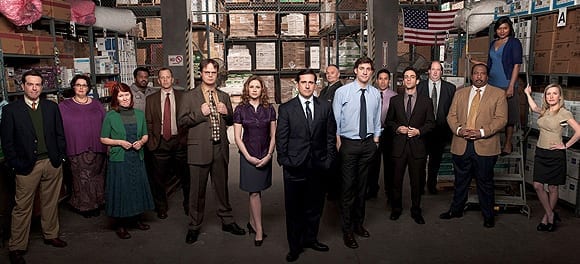For fans of British television, there are few things that bring as much anxiety as hearing the words “American adaptation.” For every success story, there seems to be countless failures and flops. As an American, I have seen countless attempted adaptations advertised constantly by networks before almost immediately disappearing after a season or less. Many of these adaptations were incredibly stilted and awkward, especially the comedies. Why are these typically such failures? Americans have loved British comedy for a long time, so it would seem that bringing British humor over and injecting it with American references to make it more relatable to the new audience would only make sense. To understand why this generally doesn’t work, let’s go the opposite route and look at the most successful American adaptation of a British comedy—The Office.
The Office is probably the best example of how to truly adapt a show for a new audience, which is a major reason that it found success. The pitfall of many of the failed attempts have been based on an attempt to actually recreate the original with Americanized names and cultural references instead of taking the core concept of the show and bringing fresh ideas to it. This is especially true in the pilot episodes of these adaptations as seen in The Inbetweeners, Skins, and The IT Crowd, Three’s Company (adapting Man About the House), and yes, The Office.
Not only has the pilot, but large amounts of the entire first season of The Office reflected the original in themes, characters, plotlines, and humor (including repeating exact jokes). However, this season didn’t quite resonate with American audiences. Outside of the pilot, the season was met favorably by critics, but viewership declined drastically over its run. Then, good timing and a bit of luck brought on the first factor that led to increased success for the show—the unpredicted success of Steve Carell’s summer film The 40 Year-Old Virgin. Because of the success of the film, and Steve Carell’s increased public exposure, NBC decided to bring the show back for a second season. The second season’s ratings continued to grow, and were even further bolstered when NBC added episodes to iTunes, which immediately spiked the viewership even more and led to the network ordering additional episodes until it was a full American season with 22 episodes.
Giving The Office a chance to grow and come into its own as a show was key in its success. The longer the show ran, the less it resembled the British original. Carell’s Michael Scott had an opportunity to step out of the shadow of Ricky Gervais’ David Brent, and it resonated with American audiences. In the first American season, Michael Scott was a shadow of David Brent—retaining his nastiness, but lacked Gervais’ comedic timing. It was awkward, and viewers’ reaction to it showcased why so many of these attempted adaptations have failed. Ricky Gervais said it himself, American and British audiences have different values and tastes, especially in humor. Not only Michael Scott, but other characters and plotlines had chances to become their own. Jim and Pam’s romance differed from Tim and Dawn’s. Dwight Schrute developed into one of the most twistedly American characters ever in comparison to Gareth Keenan’s militant insanity.
American network television is, at its very core, a business. The entire format is based around the goal of reaching 100 episodes, considered to be the benchmark for a show to get syndicated. It is the unfortunate reality that drives how shows are created and run. While I am not pessimistic enough to believe that this strips away any chance of these shows being run with creativity as the main focus, it definitely changes the overall approach. Looking at The Office, and how it adapted in order to find success, it perfectly fits what The University of Southern California presents as necessary factors in effective communication and marketing. Firstly, it considered the audience and adapted itself to be more successful. Next, the show’s staff (and even more so, its production company and network) had the specific goal of reaching 100 episodes in order to achieve syndication and did what it could to achieve it. Finally, it had the right team to make this happen. Between the big name leads of the show, the incredibly deep and talented ensemble cast, and the team behind the scenes, the work on the show was a consistently strong effort for its nine seasons. It isn’t very fun to think of the business side of the entertainment we enjoy, but it is important in understanding what makes a show successful or not.
The Office ran for 201 total episodes over nine seasons in America and remained mostly consistent in quality until the end, even with the departure of Steve Carell during the seventh season. With this extra time, The Office was able to separate itself from the original while keeping the core basis of the story the same. At their cores, each show is about the experience of average office workers, utilizing comedy to satirize these experiences. This is a vital lesson for future attempted adaptations to learn: don’t copy the original and expect the same results. Find what the heart of the story really is and find a way to tell that to the new audience.
This is the first installment of UK vs. US, a new series of articles I am writing, covering crossovers between British and American TV. For my next installment I will be covering House of Cards. If you have any shows you would like to see covered, leave a comment below or get in touch with us via social media.
Words by Zachary Evans.
